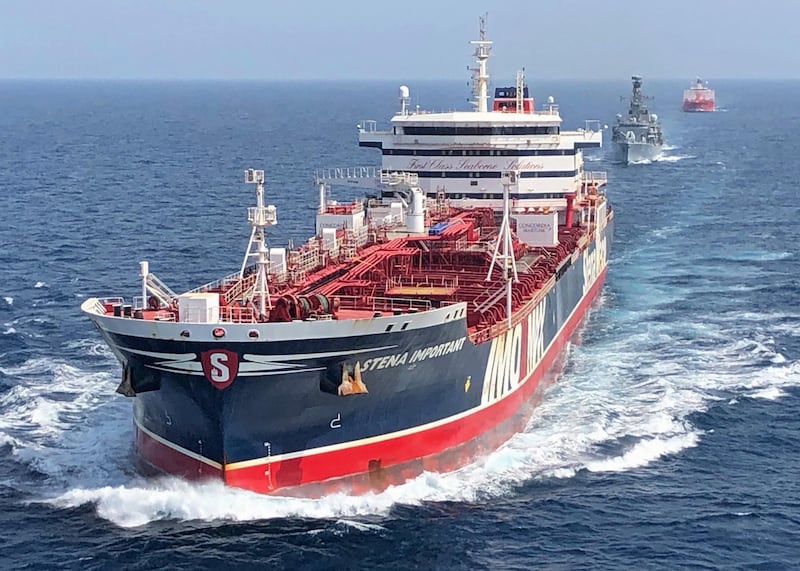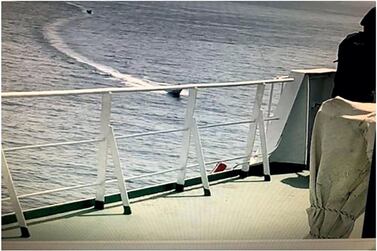The Iranian Revolutionary Guard Corps was blamed after a Hong Kong-flagged ship was boarded in the Gulf of Oman on Tuesday amid heightened tension between Tehran and Washington.
The UK Maritime Trade Organisation said the vessel “has now been released” and was “under control of the master”, with all of its crew safe.
The organisation provides intelligence from Royal Navy to international ships in high-risk areas, including the Strait of Hormuz, along the coast of Somalia and the Gulf of Aden.
It helps British vessels to avoid dangers such as pirates, suicide bombers and unwanted foreign interference with shipping routes.
The boat is now at anchor off of Iran’s Ras Al Kuh coast.
The maritime organisation said the vessel "had been boarded by armed men while at anchor" near the strait off the coast of Iran.
The UK organisation urged ships travelling in the area to exercise caution.
The US Navy's Fifth Fleet, based in Bahrain, did not immediately respond to a request for comment. There was no immediate report from Iran on the incident.
But online service Tanker Trackers, which monitors shipping activity in the Strait of Hormuz, said the SC Taipei was boarded by Iran's navy as it sailed to Jubail port in Saudi Arabia.
It is unclear what the armed men did once on the vessel, or how long they stayed on the ship, but the UK organisation said it was continuing to monitor the situation.
A maritime intelligence company warned of suspicious incidents in an area near the strait in recent weeks.
Dryad Global, the private company that issued the first warnings about suspicious incidents, identified the ship as a "Hong Kong-flagged vessel", without elaborating.
It said the 22 crew members aboard were all Chinese.
SC Taipei's satellite tracking beacon showed it off the coast of Iran near the area for which the warning was issued, data from the website MarineTraffic.com showed.
That area is near Iran's restive Sistan and Baluchistan province, where militants have attacked in the past. But they are not known to have attacked shipping.
The ship's tracking data suggested the armed men took the vessel to Bandar Jask, which the Guard did last year when it took custody of crew members from a Norwegian-owned oil tanker hit by an explosion the U.S. blamed on an Iranian mine.
The quick release of the ship suggests Iran realized only after the fact it had seized a Chinese vessel, rather than a Western one as in previous incidents. Iran has increasingly relied on China amid U.S. sanctions over its nuclear program.
"At a time when China still buys Iranian oil, and Iran has few international friends, such a move would be highly irregular and would not further Iran's interests," Dryad Global said.
Even as both face the same invisible enemy in the coronavirus pandemic, Iran and the United States remain locked in retaliatory pressure campaigns that now view the outbreak as just the latest battleground.
Last year, Iran was accused by the US of attacks against several oil tankers.
Iran seized at least one British-flagged tanker and approached another.
Washington and other western powers have accused Tehran of lashing out after the US withdrew from the nuclear deal signed with world powers in 2015.
It imposed crippling sanctions on the Iranian economy to disrupt its activity across the Middle East.
In response to the attacks, the International Maritime Security Construct was launched in November, based in Bahrain.
It is designed to protect navigation in the Gulf, including the Strait of Hormuz.







